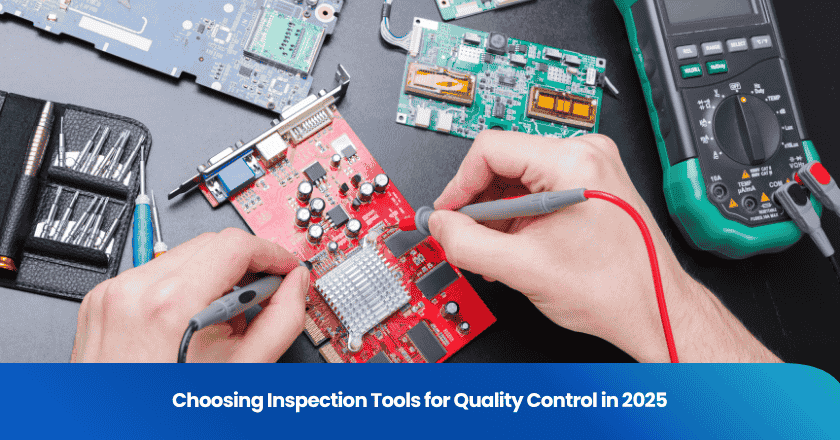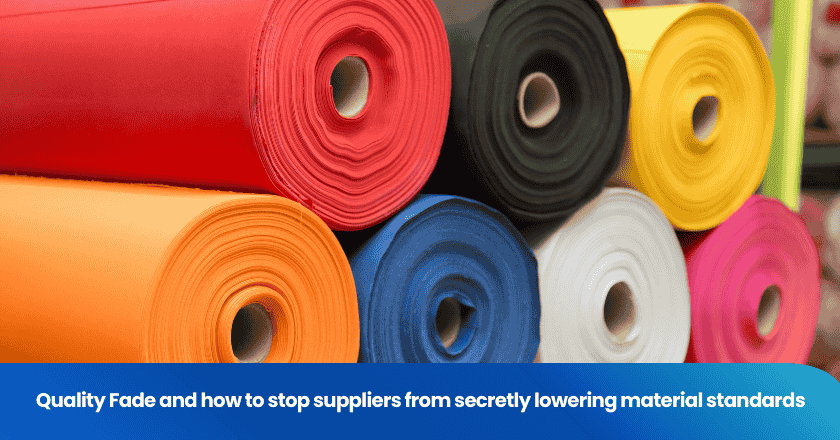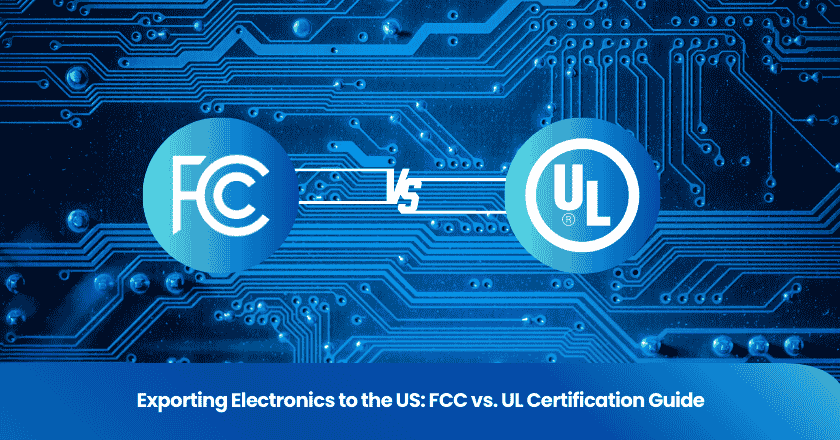
To choose the right inspection tools for quality control in 2025, you need to match your quality requirements with the latest tool capabilities. You should focus on accuracy, efficiency, compliance, and scalability. Evolving demands in manufacturing and service industries push you to rethink which tools best maintain standards and support your business goals. Inspection tools now play a vital role in meeting these challenges, with new technologies driving measurable improvements.
You should consider both traditional and digital solutions, as well as industry-specific needs, to keep pace with rapid changes. The global market for AI visual inspection systems is expanding quickly, reflecting the growing importance of advanced quality control.
Key Takeaways
- Choose inspection tools that match your quality requirements. Focus on accuracy, efficiency, compliance, and scalability to meet industry demands.
- Regular quality inspections reduce costs associated with defects. Catching issues early can save up to 20% of annual revenue lost to poor quality.
- Integrate modern inspection tools with existing systems. Digital integration enhances data flow, improves decision-making, and supports real-time monitoring.
- Evaluate both traditional and digital inspection solutions. Each industry has unique needs, so select tools that address specific challenges effectively.
- Invest in training and support for your team. A well-trained staff can maximize the benefits of new inspection tools and improve overall quality control.
Why Inspection Tools Matter
Product Quality
You rely on quality inspections to maintain high standards throughout your production cycle. Inspection tools help you verify that raw materials meet specifications, monitor quality at critical stages, and ensure finished products comply with requirements before shipping.
The following table highlights how different types of quality inspections impact your ability to uphold quality standards:
| Type of Inspection | Impact on Quality Standards |
|---|---|
| Incoming Inspection | Verifies raw materials meet specifications before production |
| In-Process Inspection | Monitors quality at key stages in manufacturing |
| Final Inspection | Ensures products meet quality standards before shipping |
Quality inspections play a direct role in reducing the cost of poor quality, which can account for up to 20% of annual revenue. You can avoid significant losses by catching defects early. Over 65% of manufacturers still use manual inspection methods, and 40% face frequent product recalls. As W. Edwards Deming said,
“Quality should be built in, not inspected in.”
Compliance
You must meet regulatory requirements to avoid penalties and maintain customer trust. Inspection tools support your quality control processes by enabling systematic data collection and analysis. These tools help you identify defects early, ensuring products meet specified standards. Quality inspections standardize your approach and increase efficiencies, which contributes to continuous improvement. You gain a reliable method for resolving manufacturing defects and process inefficiencies, which is crucial for regulatory compliance.
- Inspection tools facilitate systematic data collection and analysis.
- Early defect identification ensures products meet requirements.
- Standardized quality inspections contribute to continuous improvement.
Efficiency
You achieve enhanced productivity and efficiency by integrating inspection tools into your operations. Automated data cleansing reduces manual effort and increases accuracy. Real-time data monitoring allows you to identify and resolve issues quickly. Improved data consistency enhances your decision-making process. Streamlined data integration ensures seamless data flow across systems, supporting your quality inspections at every stage.
You can reduce costs and improve performance by using inspection tools. These tools help you identify and fix errors more efficiently, supporting your quality inspections and driving operational success.
Challenges with Outdated Inspection Tools
Accuracy Limits
You face significant risks when relying on outdated inspection tools. Manual processes often introduce human error and fatigue, which can lower accuracy and increase defect rates. These limitations make it difficult to catch quality issues before products reach customers. For example, a semiconductor manufacturer in Asia saw a sharp drop in customer complaints after switching to automated inspection systems. This improvement came from increased accuracy and consistency, which manual inspections could not achieve. When you use older tools, you risk missing defects, leading to costly product recalls and damage to your reputation.
Integration Issues
Legacy inspection tools often struggle to connect with modern manufacturing systems. You may encounter fragmented data flow between machines and software platforms, which leads to inefficiencies. Many older systems cannot interface with new equipment, restricting your ability to digitalize operations. Different machines may use incompatible communication protocols, making integration even more complex. Data silos can form, preventing real-time communication between inspection and production processes. You often need human intervention to bridge these gaps, which increases error rates and slows down your workflow.
- Fragmented data flow between machines and software platforms
- Incompatibility in communication protocols among different systems
- Data silos that hinder real-time decision-making
Regulatory Risks
Outdated inspection tools can expose you to serious regulatory risks. As standards evolve, you may find it hard to keep up with new requirements. This can result in non-compliance, financial losses, and harm to your organization’s reputation.
The following table outlines some of the main regulatory risks you face:
| Regulatory Risks | Description |
|---|---|
| Non-compliance with evolving standards | You may fail to meet updated regulatory requirements, leading to penalties. |
| Financial losses | Inadequate tools can cause recurring quality issues and financial setbacks. |
| Damage to reputation | Failing to maintain compliance can harm your public image. |
Organizations using outdated inspection tools have experienced staggering financial losses.You can avoid these risks by updating your inspection tools and ensuring your processes meet current standards.
Selection Criteria for Inspection Tools
Selecting the right inspection tools for your operations in 2025 requires a structured approach. You need to evaluate your process needs, examine tool features, consider digital integration, and weigh cost and support. Each factor plays a critical role in ensuring your quality inspections deliver reliable results and support your quality control processes.
Process Needs
You should start by understanding the specific requirements of your production process. Every industry faces unique challenges, and your inspection tools must address these needs directly. For example, the automotive sector demands rigorous safety and reliability checks, while electronics manufacturing focuses on component placement and circuit functionality. Pharmaceuticals require precise batch weights and contamination testing, and machining emphasizes adherence to design specifications.
You can use the seven basic quality tools to support your process analysis. These tools include the cause-effect diagram, data collection sheets, histograms, Pareto charts, stratification, scatter plots, and control charts. They help you identify, analyze, and address quality issues, making them valuable for any industry. Their simplicity and effectiveness allow you to visualize problems, prioritize actions, and monitor process stability.
Tool Features
Modern inspection tools offer a range of features that enhance your quality inspections. You should look for automation capabilities, which reduce manual effort and improve reliability. Data analytics and advanced technologies, such as AI and machine learning, provide deeper insights and higher accuracy. Real-time data processing enables immediate feedback, while predictive analytics help you prevent quality failures before they occur.
| Feature | Description |
|---|---|
| Automation | Automating inspection tasks reduces time and resources while improving reliability. |
| Data Analytics | Data-driven quality intelligence utilizes IIoT sensors and advanced analytics. |
| Advanced Technologies | Innovations like AI and machine learning enhance accuracy in inspections. |
| Real-time Data Processing | Automated systems enable real-time data-driven processes for inspections. |
| Predictive Analytics | Helps identify potential quality failures before they occur. |
| Efficiency | Automated systems improve efficiency and accuracy in identifying defects. |
| Enhanced Decision-Making | Data-driven technologies improve decision-making capabilities in quality control. |
You should also consider usability. Intuitive dashboards and easy-to-understand reports make it easier for your team to adopt new systems. Training requirements should be minimal, so your staff can focus on quality inspections rather than learning complex software.
Digital Integration
Digital integration transforms how you manage quality inspections. When your inspection tools connect seamlessly with production equipment, you create a closed-loop feedback system. This system automatically adjusts parameters based on quality metrics, ensuring consistent results and reducing the need for manual intervention.
- Digital quality control systems communicate with production equipment, adjusting parameters automatically.
- Real-time monitoring allows for immediate feedback and corrective actions, reducing the risk of defects.
- Automated data collection improves accuracy and speeds up reporting.
- Predictive analytics powered by AI can alert you to potential failures before they escalate.
- Machine vision systems and AI-powered algorithms deliver comprehensive quality assessment, detecting defects with speed and precision.
You gain a more efficient workflow and greater confidence in your quality inspections when you leverage digital integration.
Cost and Support
Cost plays a significant role in your decision-making process. Advanced inspection tools, especially automated systems, typically range from $110,000 to $200,000. The final investment depends on the complexity of your system and your industry’s specific requirements. You should conduct a detailed cost analysis to ensure the solution fits your budget and delivers a strong return on investment.
Support is equally important. You need access to expertise in system design, implementation, and ongoing optimization. Reliable vendor support includes fast response times, regular software updates, and a robust knowledge base. Regional support presence can also make a difference, especially if you operate across multiple locations.
Tip: Evaluate both the initial investment and the long-term value of your inspection tools. Strong support and scalability can save you time and money as your business grows.
By carefully considering these criteria, you can select inspection tools that align with your quality goals and support your quality control processes for years to come.
Quality Inspection Software
Choosing Software
Selecting the right quality inspection software shapes the effectiveness of your quality inspections in 2025. You face a rapidly changing landscape, where digital transformation and automation drive new standards for accuracy and efficiency. Across industries, several trends influence your decision-making process:
- Integration of AI technologies now enhances accuracy and efficiency in quality inspection software.
- Micron-level defect detection has become essential, especially as products grow more complex.
- Automated Optical Inspection (AOI) systems powered by AI can identify even the smallest defects.
- Customer satisfaction drives the adoption of advanced inspection systems, especially in sectors like electronics and luxury goods.
- Automation and data-driven quality strategies are transforming workflows, allowing you to use inspection data for operational improvements.
When you choose quality inspection software, you must evaluate software features that align with your business needs.
Consider the following factors:
| Factor | Description |
|---|---|
| Budget | Choose a system that fits your budget, considering ongoing costs and ROI. |
| Scalability | Ensure the software can grow with your business and handle increased volumes. |
| Security and Compliance | Select software with robust security measures to protect sensitive data and ensure regulatory compliance. |
| Software Features | Look for essential features like real-time data collection, automated workflows, and customization. |
| Vendor Reputation | Research vendors with a proven track record in your industry for reliability. |
You should prioritize software that offers real-time data integration. This capability enables immediate data capture, faster decision-making, and reduces delays. Automated workflows streamline your processes and minimize manual errors. Seamless communication between teams improves compliance and collaboration. Faster visibility allows for quicker reporting and documentation, while real-time monitoring provides broader operational insights.
Tip: When you evaluate software features, focus on how well the system integrates with your existing equipment and processes. This ensures a smooth transition and maximizes the benefits of quality inspection software.
Implement Quality Inspection Software
To implement quality inspection software successfully, you need a structured approach. Each step ensures that your organization gains the full benefits of quality inspection software and supports your quality inspections at every stage.
1. Assess the current inspection process. Identify gaps and inefficiencies in your existing workflows.
2. Define clear objectives for your inspection management system. Set measurable goals for quality, efficiency, and compliance.
3. Select software that aligns with your objectives and industry requirements.
4. Customize the system to fit your unique processes and reporting needs.
5. Train your staff thoroughly. A well-trained team adapts quickly and uses the software effectively.
6. Pilot the system with a small group. Gather feedback and make necessary adjustments.
7. Roll out the system organization-wide. Monitor adoption and address any challenges promptly.
8. Continuously monitor and optimize performance. Use feedback and analytics to drive ongoing improvements.
The benefits of quality inspection software extend beyond automation. You reduce errors in the inspection process, increase efficiency, and gain access to real-time data and analytics for better decision-making. Automated alerts notify maintenance crews when machines are out of calibration. Direct report sending from the field improves documentation. Integration of inspection data into external systems supports real-time monitoring and operational oversight.
Note: Real-time data integration not only streamlines your quality inspections but also enhances collaboration and compliance across your organization.
By following these steps, you ensure that your investment in quality inspection software delivers measurable improvements in product quality, operational efficiency, and regulatory compliance.
Types of Inspection Tools
Visual Inspection Tools
You use visual inspection tools to detect surface defects such as scratches, dents, and misalignments. These tools help you maintain high standards by ensuring only defect-free items reach your customers. Visual inspection can be manual or automated. Manual inspection relies on the skill of the inspector, which can lead to variability and fatigue. Automated systems provide consistent detection for pre-defined defects and work well in large-scale production. However, visual inspection cannot identify subsurface issues and may face challenges with lighting or cleanliness.
- Detects surface flaws early in production
- Ensures product appearance meets quality standards
- Scales efficiently with automation
Dimensional Measurement
Dimensional measurement tools play a critical role in quality control. You rely on these tools to verify that parts meet precise specifications. Machine vision systems, structured light technology, and non-contact measurement devices deliver high accuracy. For example, structured light technology achieves 10-micrometer precision, making it ideal for industrial inspection and 3D printing. Automation eliminates human error and ensures consistent results.
Non-Destructive Testing
You use non-destructive testing (NDT) methods to inspect materials without causing damage. Ultrasonic testing helps you find imperfections deep within welds or structural metals. Radiographic testing uses X-rays to reveal internal flaws like cracks or porosity. Magnetic particle testing detects surface and subsurface defects in ferromagnetic materials. These methods ensure product integrity and safety, especially in industries like automotive, aerospace, and electronics.
Tip: NDT methods allow you to maintain quality while preserving the value of your products.
Glass Inspection Tools
Glass inspection tools address the unique challenges of the glass industry. You need to measure thickness, check coatings, and identify different glass types. Low-E coating detectors help you confirm the presence and surface of coatings. IG thickness gauges measure total thickness and air gaps. Glass identification meters distinguish between laminated, tinted, or coated glass. Glass Chek combines these functions into one handheld device. You should consider must-have glass inspection tools to ensure your products meet industry standards and customer expectations.
- Low-E coating detectors
- IG thickness gauges
- Glass identification meters
- Glass Chek for comprehensive analysis
Environmental Testing
Environmental testing tools help you monitor emissions, waste, and compliance with safety standards. You track key performance indicators to manage your sustainability goals. These tools ensure your products meet environmental regulations and industry standards. You gain confidence that your operations support both safety and sustainability.
- Monitors emissions and waste management
- Ensures compliance with environmental standards
- Supports sustainability initiatives
You strengthen your quality control by aligning inspection tool choices with your business goals. A robust inspection program reduces risks and drives competitiveness. Regularly evaluate both traditional and digital tools to adapt to industry changes. Companies that invest in ongoing evaluation see up to 40% fewer complaints and improved customer trust.
Next steps:
1. Assemble a project team from key departments.
2. Assess your current inspection process and identify gaps.
3. Plan upgrades or software implementation with clear objectives.
A strategic, future-focused approach delivers efficiency, accuracy, and long-term success.
FAQ
What are the most important features to look for in inspection tools?
You should focus on accuracy, automation, real-time data integration, and ease of use. These features help you improve quality, reduce errors, and streamline your inspection process.
How often should you upgrade your inspection tools?
You should review your inspection tools every two to three years. Regular evaluation ensures your tools meet current industry standards and support your quality goals.
Can you integrate inspection tools with existing production systems?
Yes, many modern inspection tools offer digital integration. You can connect them to your production systems for seamless data flow and improved process control.
Why is digital integration important for quality control?
Digital integration allows you to collect real-time data, automate reporting, and quickly identify issues. This improves decision-making and helps you maintain consistent product quality.
Grow your business with TradeAider Service
Click the button below to directly enter the TradeAider Service System. The simple steps from booking and payment to receiving reports are easy to operate.



